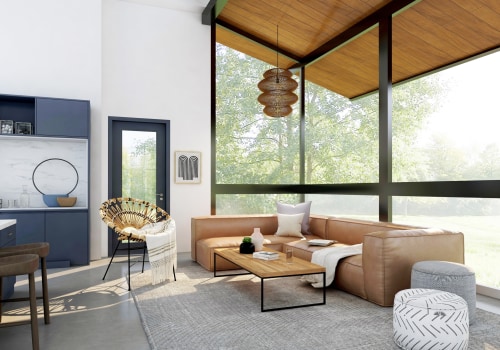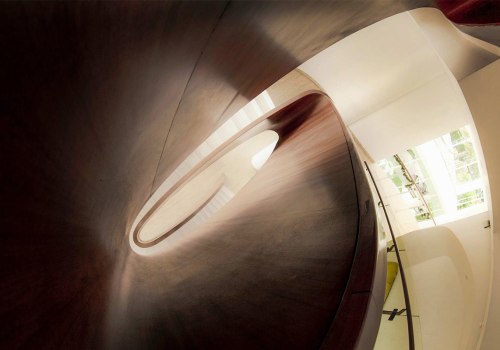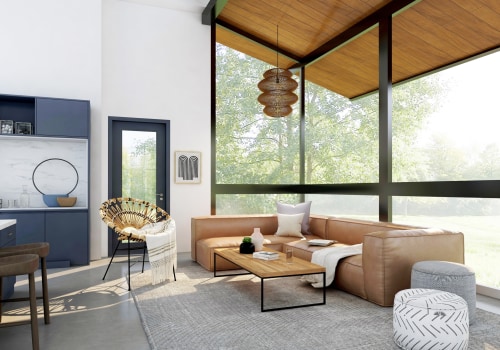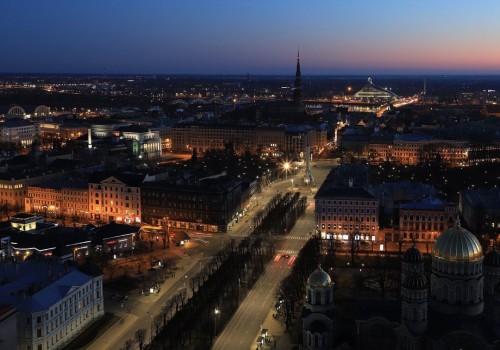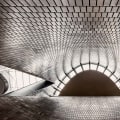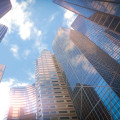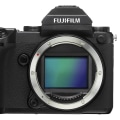Do you need to capture stunning, jaw-dropping architectural photographs for commercial projects? Professional-grade architectural photography requires a combination of the right camera settings and lenses. In this article, we will explore the best camera settings and lenses for commercial architectural photography and provide tips and techniques to help you get the most out of your photographs. From understanding the basics of composition and shutter speed to mastering the use of natural light, we will provide you with the knowledge you need to take your architectural photography to the next level. So, let's get started!Commercial architectural photography requires the right camera settings and lenses to produce high-quality images.
The right camera settings and lenses are essential for commercial architectural photography as they can help create unique and stunning shots that capture the viewer’s attention. Examples of camera settings and lenses used in commercial architectural photography include shutter speed, aperture, ISO, focal length, and lens types.
Shutter speed
controls how long the shutter remains open to allow light to reach the sensor of the camera. A slow shutter speed allows for more light to be captured in the image but can also cause motion blur.A fast shutter speed allows for a shorter exposure time and can freeze motion in the image.
Aperture
is the size of the opening in the lens through which light passes. The larger the aperture, the more light that can enter the lens, resulting in brighter images.ISO
is a measure of the sensitivity of the image sensor.Higher ISO values will result in brighter images, but can also result in more noise.
Focal length
determines how much of a scene is included in an image. Longer focal lengths will result in a narrower field of view and shorter focal lengths will result in a wider field of view.Lens types
come in various forms, including prime lenses, zoom lenses, wide-angle lenses, and macro lenses.Each type of lens has its own advantages and disadvantages, depending on the type of shot being taken. Wide-angle lenses are great for capturing expansive scenes and landscapes while macro lenses are great for capturing close-up shots. Prime lenses are great for providing sharper images but have limited focal lengths while zoom lenses offer a range of focal lengths but can cause distortion in shots. Each setting/lens combination has its own advantages and disadvantages and it’s important to know when to use each one. For example, when shooting architectural photography, it’s important to use a wide-angle lens as this will capture more of the building in the shot. To optimize each setting/lens combination for commercial architectural photography, there are several techniques that can be used.
One technique is to use manual focus so that you can manually adjust the focus point to get the sharpest image possible. Another technique is to use bracketing to capture multiple shots at different exposures and then blend them together to create a more balanced image. Another technique is to use HDR (High Dynamic Range) to capture a greater range of tonal values which can help bring out details in shadows or highlights. When it comes to commercial architectural photography, using the right camera settings and lenses can make a huge difference in the quality of your images. It’s important to understand the advantages and disadvantages of each setting/lens combination, as well as tips and techniques that can be used to optimize each combination to get the perfect shot.
By using these tips and techniques, you can capture stunning shots that will capture your viewers’ attention.
Tips and Techniques for Getting the Perfect Shot
When shooting commercial architectural photos, it is important to use the right techniques to ensure you get the perfect shot. Framing, composition, lighting, and angles all play an important role in creating stunning images. When framing a shot, it is important to consider the subject of the photo and the environment in which it is located. Consider the elements that you want to include in the image and the elements that need to be excluded.Consider the use of leading lines to draw the viewer’s eye towards a specific point. Composition is also key to getting the perfect shot. When composing an architectural shot, consider the rule of thirds, leading lines, and balance. Ensure that the subjects in your image are properly balanced and that there is a clear focal point.
Lighting is another essential element for commercial architectural photography. Natural light can be used to create a dramatic effect, while artificial light can be used to highlight certain aspects of a structure. It is important to use the right lighting technique to enhance the subject of your photo. Angles are also an important part of architectural photography.
When taking photos of buildings, consider shooting from different angles to create interesting perspectives. Consider shooting from a low angle or from a higher angle to capture different aspects of a structure. These are some of the tips and techniques that can be used to get the perfect shot when taking commercial architectural photos. Consider framing, composition, lighting, angles, and other techniques to achieve the desired result.
Choosing the Right Camera Settings and Lenses
When it comes to commercial architectural photography, choosing the right camera settings and lenses is paramount.Lighting conditions, building size, and distance from the subject are all factors that should be taken into consideration when selecting the optimal settings and lenses. It is also important to consider the desired result – whether you are trying to achieve a wide-angle view of a large building, or a detailed close-up shot. For optimal results, it is best to use a combination of different settings and lenses. For example, a wide-angle lens can be used to capture the entire building from far away, while a telephoto lens can be used for detailed close-ups. Additionally, a tripod can help to reduce camera shake and blur, while a polarizing filter can reduce reflections from windows and other reflective surfaces. When adjusting the camera settings, it is important to consider the lighting conditions.
A slower shutter speed can be used in low-light situations to capture more light, while a faster shutter speed can be used to freeze motion. Additionally, using a higher ISO value can help to capture more light in darker settings. Finally, techniques such as HDR (high dynamic range) imaging can be used to bring out details in shadows and highlights. This technique involves taking multiple exposures of the same scene at different exposures and then combining them into one image. This can help to create more vivid images with greater detail. In conclusion, it is important to choose the right camera settings and lenses for commercial architectural photography in order to produce high-quality images.
It is also important to utilize tips and techniques such as paying attention to lighting and composition, using a tripod, and utilizing manual focus to get the perfect shot. By following these tips and techniques, you can ensure that your photos will be of the highest quality and capture the readers’ attention.


